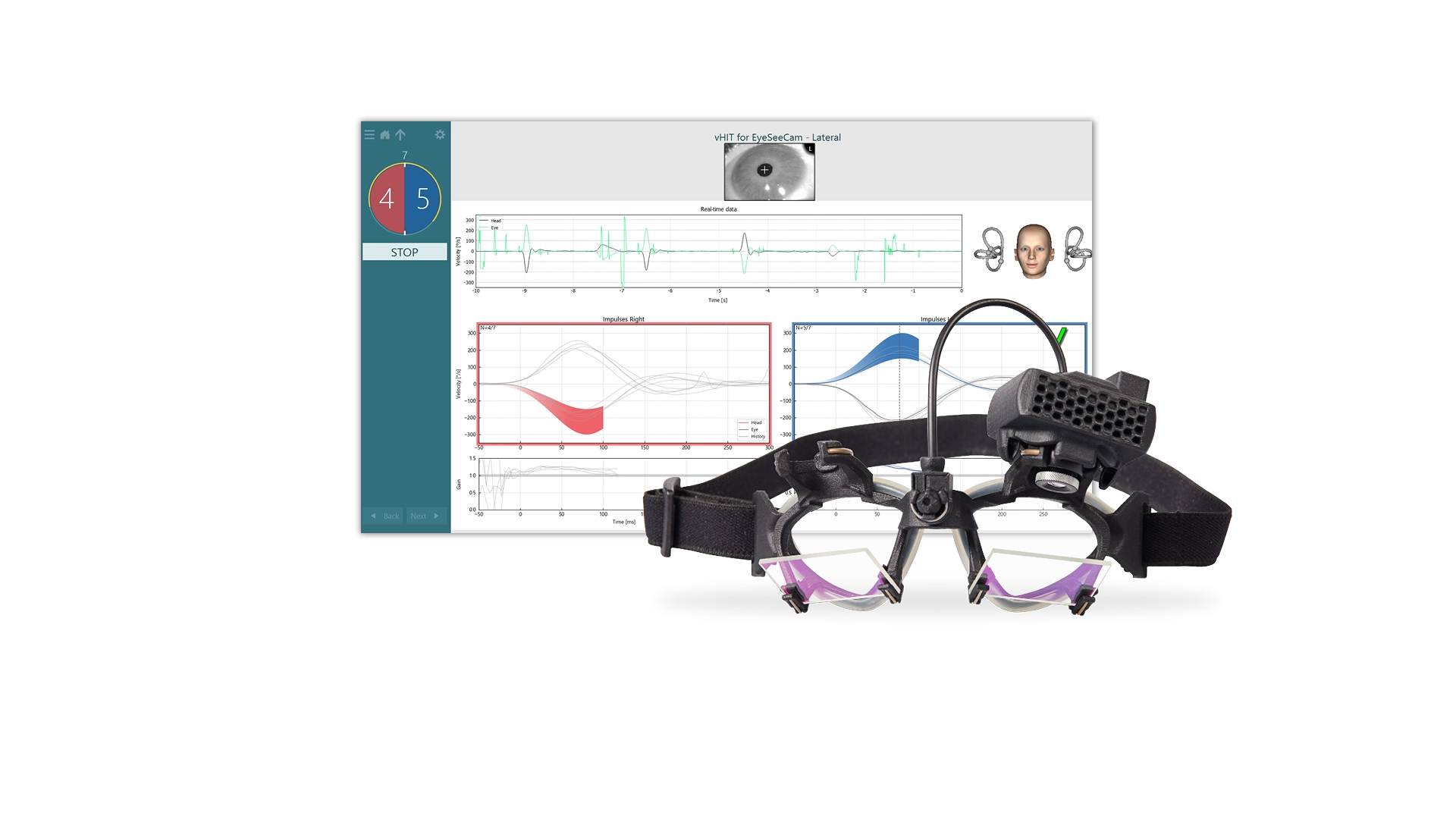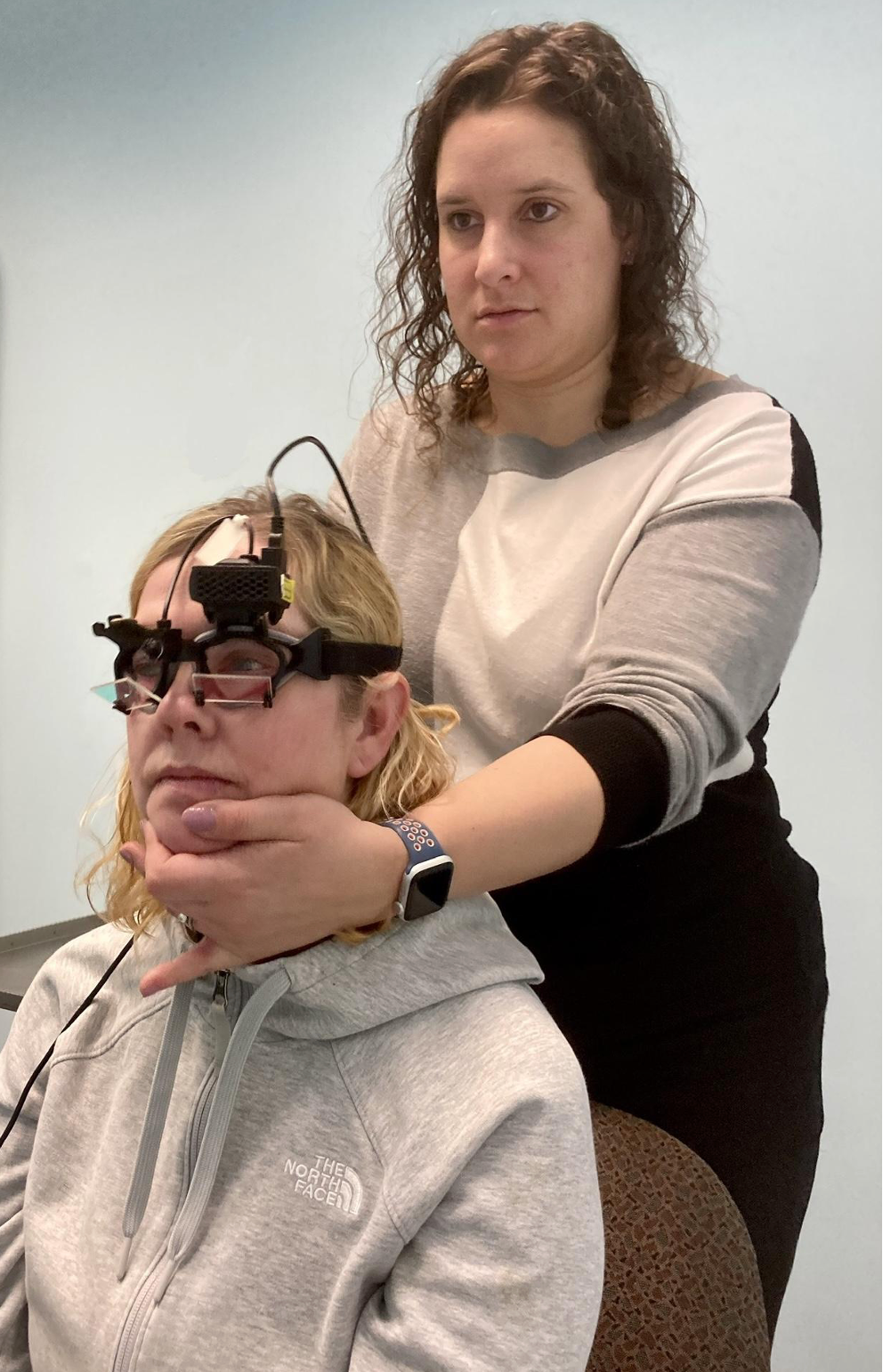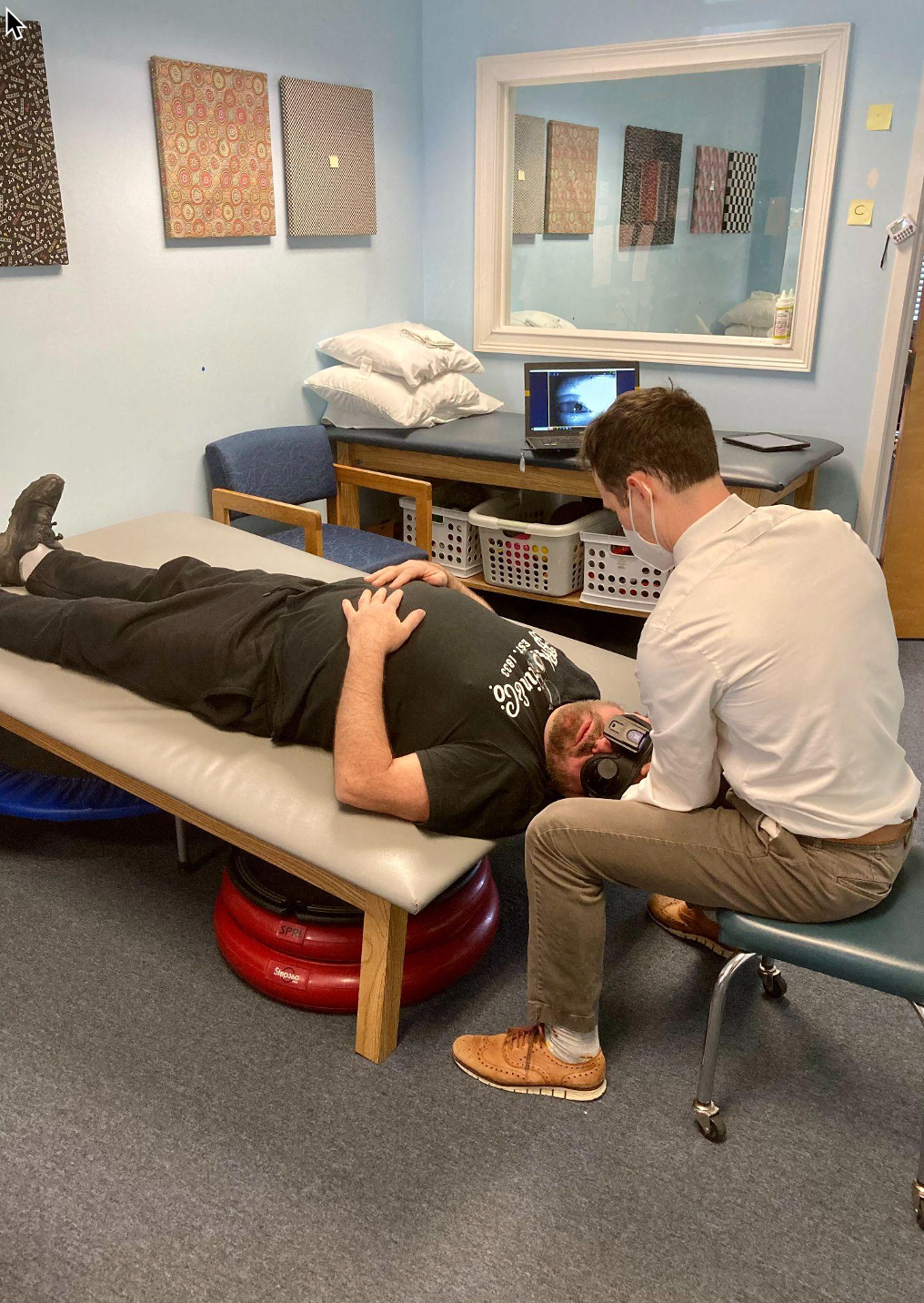Video Head Impulse Test for Vestibular Function
The video head impulse test, also called “vHIT,” can help accurately assess the functioning of your vestibular system – the part of your inner ear that detects head movements. The results from the vHIT tell us if there is any weakness or asymmetry in function, which could contribute to your dizziness and imbalance. It can also help us measure the severity of the problem, understand how you are recovering, and determine the best exercises to help you recover.

Video Head Impulse (vHIT) googles
The test has three parts, each testing a different pair of the six semicircular canals of the vestibular system. For the test, the patient is seated in a chair wearing a pair of goggles that tracks both head and eye movement. The therapist performs quick, small movements of the patient’s head while they focus their eyes on a target.
The test takes approximately 10-15 minutes to perform. We like to discuss the findings of the test with our patients after performing the test.
The physical therapist will determine if it would be a useful test to perform in finding or confirming a diagnosis. It is particularly useful in detecting weakness of the six canals of the vestibular system which can occur on one or both sides of the inner ears diagnosed as vestibular neuritis. Often, the test is performed to rule in or rule out Vestibular Hypofunction which can help guide us in a patient’s treatment plan.

Dr. Kelsey Hanlon PT, DPT performing the video head impulse test
Demonstration Video Head Impulse Test (vHIT)
(vHIT) tests all six Sensory canals of the Vestibular System.
How does the test detect vestibular weakness?
Normally, when we turn our head quickly, the canals of the inner ear sense the rapid movement and immediately transmit this signal to the brain. Our eyes then simultaneously move at a speed equal and opposite to the head movement, so that our eyes can stay focused on whatever we are looking at. The vHIT device can detect how well you are able to keep your eyes focused on the target while your head is being moved quickly by comparing the speed of the eyes to the speed of the head. If your eye lags behind while your head is moved, this suggests decreased input from the canal being tested. Often, if there is a deficit in canal function, the eyes must make small corrections called “corrective saccades” which can be seen in the graphic read-out from the vHIT. Changes in the timing of these saccades after therapy shows recovery of the vestibular system

Testing a patient with BPPV on a large, low table tilted up to accommodate a patient with neck and back pain, using wireless Synapses infrared video goggles
WWS Physical Therapy and Vestibular Rehabilitation
1456 Ferry Road, Suite 601
Doylestown, PA 18901, USA
Tel: 215.489.3234 | Fax: 215.489.0131
